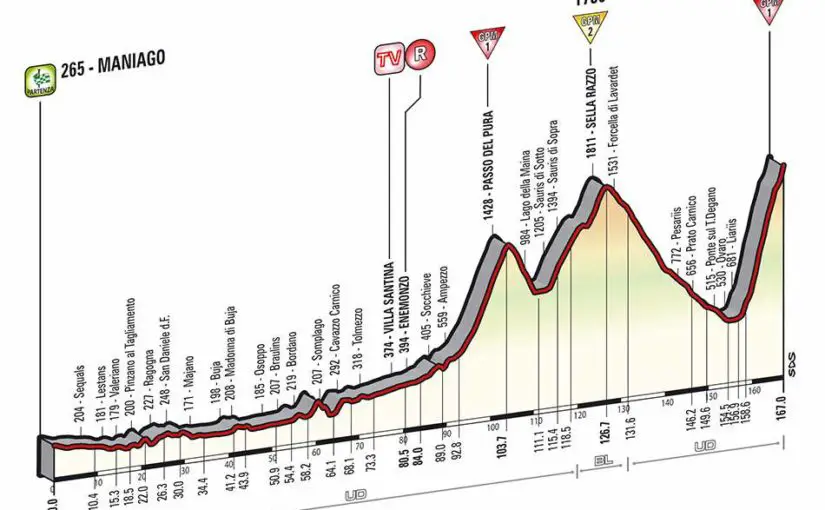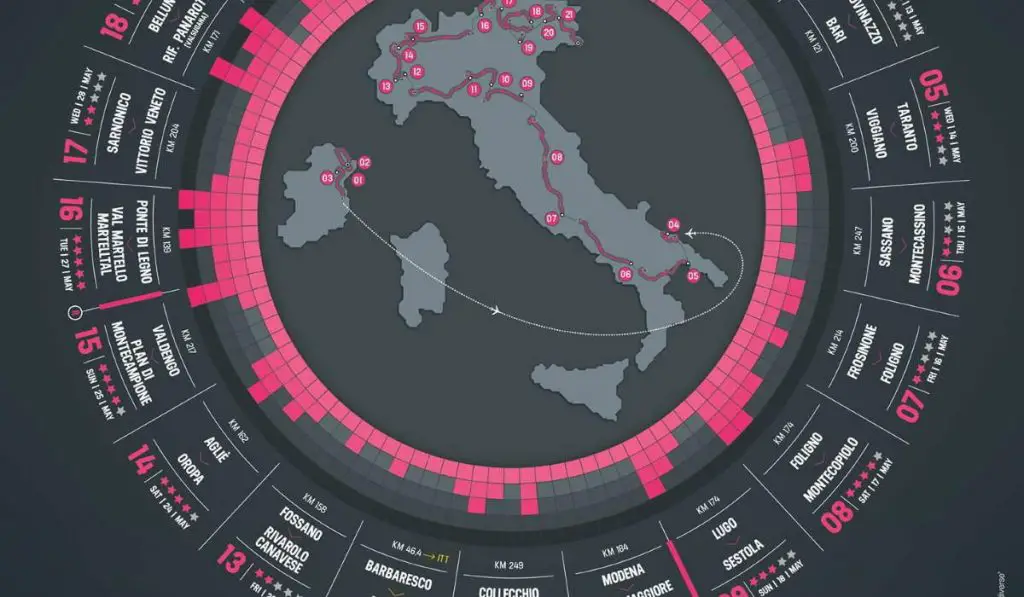And Monte Zoncolan is back! Giro d’Italia 2014 stage 20 is a 167 km high mountain stage from Maniago to Monte Zoncolan.
Giro d’Italia 2014 stage 20 quick info
- DATE: May 31, 2014, Saturday
- STAGE TYPE: High mountain
- START-FINISH: Maniago (265m) > Monte Zoncolan (1730m)
- LENGTH OF THE COURSE: 167 km
- DIFFICULTY:

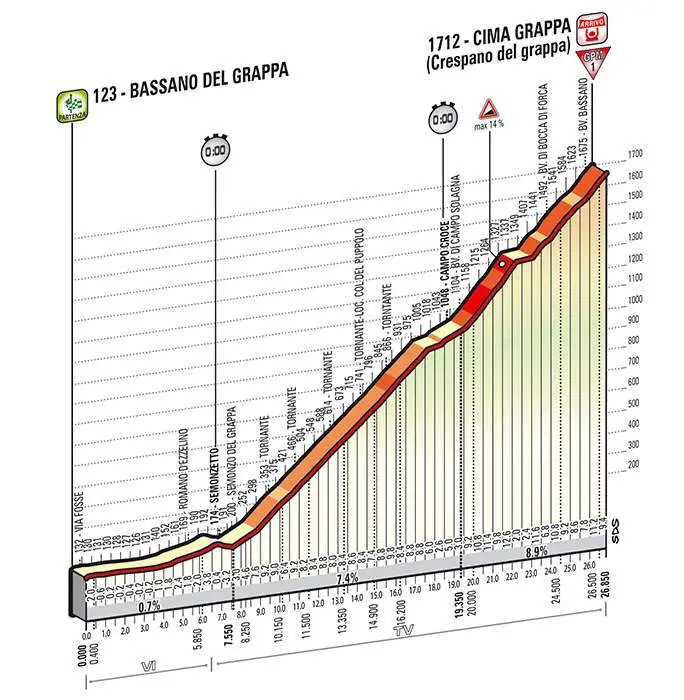
Previous stage: Giro d’Italia 2014 Stage 19 details
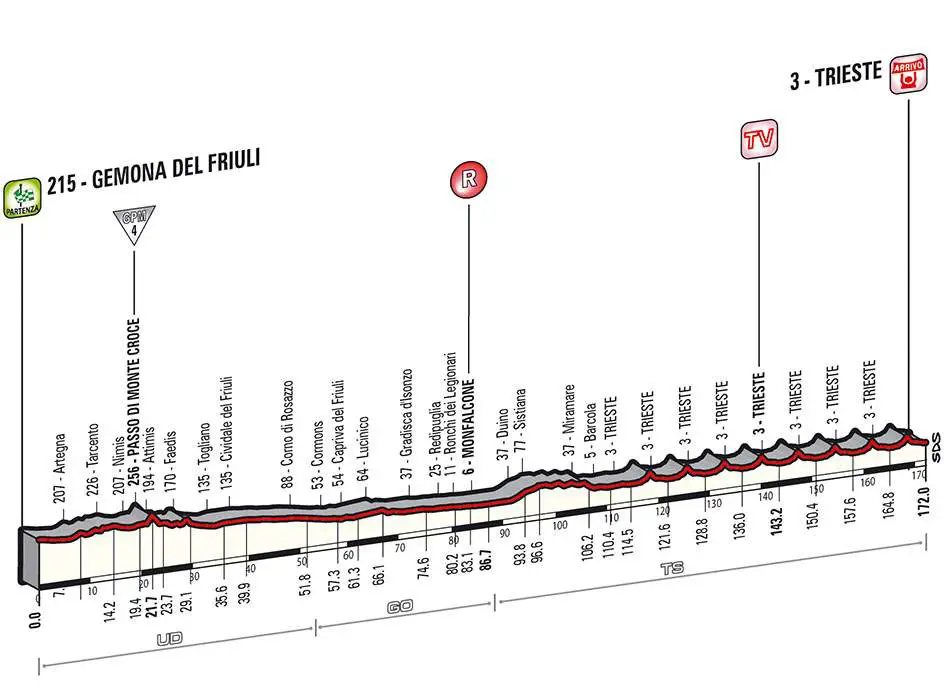
Next stage: Giro d’Italia 2014 Stage 21 details
Giro d’Italia 2014 stage 20 stage profile

Climbs
Passo del Pura

The Passo del Pura is situated in Friuli Venezia Giulia and belongs to the Apennines. Starting from Ampezzo, the Passo del Pura ascent is 11.81 km long. Over this distance, you climb 869 height meters. The average percentage thus is 7.4%.
Sella di Razzo
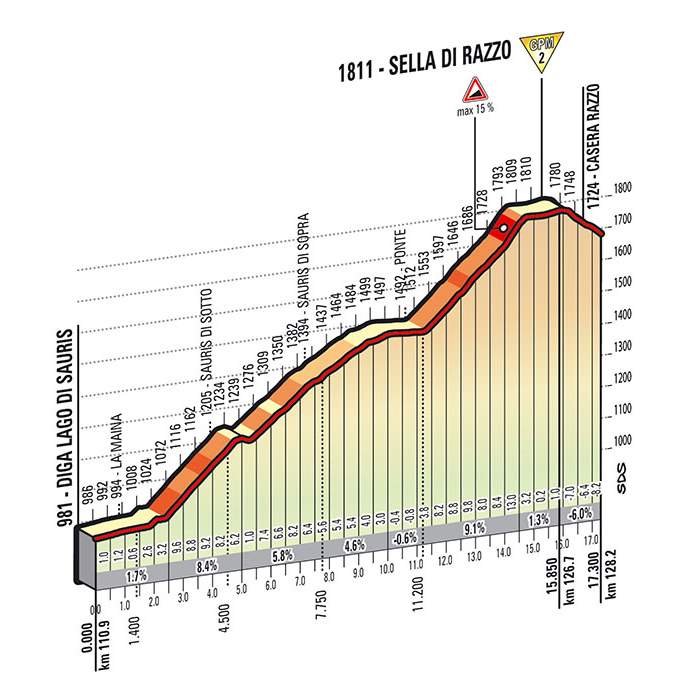
The Sella di Razzo is situated in Friuli Venezia Giulia and belongs to the Apennines.
Monte Zoncolan
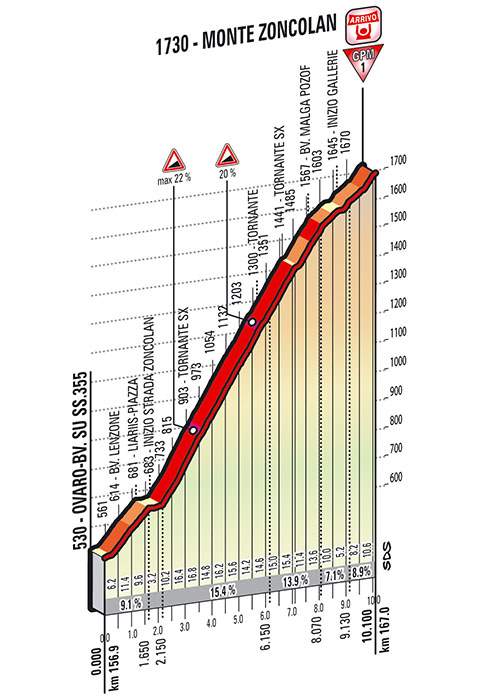


Related: Monte Zoncolan
Giro d’Italia 2014 stage 20 map
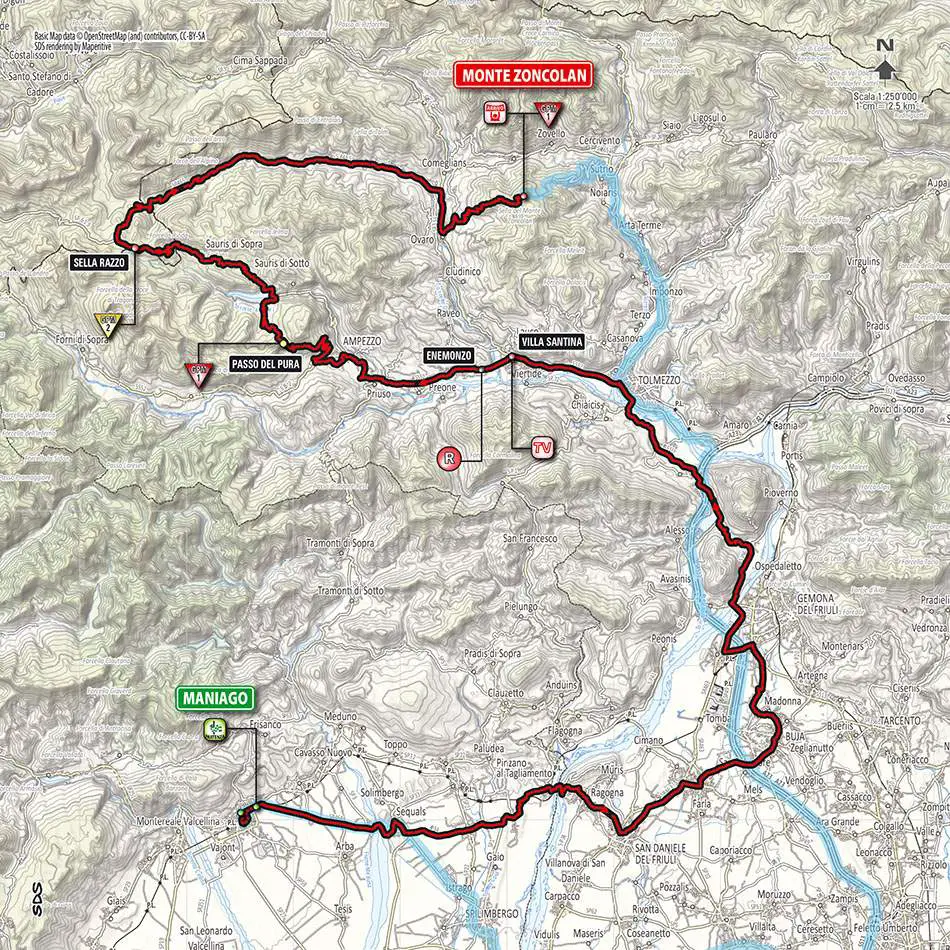
Giro d’Italia 2014 stage 20 start: Maniago

Maniago is a town and comune located in the Province of Pordenone, Friuli-Venezia Giulia (north-eastern Italy). It is known principally today for its production of steel blades which are used by the big name producers of knives, scissors, and shears which are exported worldwide.
Monuments and places of interest
Although it is a small town, in Maniago there are valuable monuments that show the past and the history of the town over the centuries, especially during the Venetian domination. The most representative places and monuments are mainly located in the historic center and in the streets surrounding it.
- Cathedral of San Mauro Martire, built in 1488 on the remains of a previous cult building dating back to the time of the Lombards, is one of the most important examples of late Gothic architecture in Friuli Venezia Giulia. Embellished by the remarkable eighteenth-century pointed-sixth portal, the work of Giacomo Conte, and by the highly decorative central rose window, the cathedral houses important artistic works, including an altarpiece by Pomponio Amalteo from 1558 and the frescoes of the choir by the same painter. dating back to 1572.
- Church of the Immaculate Conception, known as “della Madonna”, located at the entrance to Piazza Italia. The current building, designed by the architect Antonio Aprilis, dates back to 1778 and represents one of the most significant examples of neoclassical architecture in the province of Pordenone.
- However, there is evidence of a previous religious building, confirmed by a document of 1411 and by the tombstone bearing the date 1628 placed inside the church.
- Church of San Carlo, built in 1637 at the foot of the castle. It contains a 17th-century wooden altar, probably from the Belluno school, which contains an altarpiece by an unknown artist depicting San Carlo Borromeo.
- Church of the Holy Trinity, located at the beginning of the road leading to the castle and belonging to the noble residence of the counts of Maniago, was built in the seventeenth century.
- Church of the Pater Noster, a small building in Maniago di Mezzo, also known as “delle Fontanutis”, due to its proximity to a water source.
- Church of Sant’Antonio Abate , built in 1785 in Fratta di Maniago.
- Church of Saints Vito, Modesto, and Crescenzia, the main church located in the hamlet of Maniagolibero and dating back to 1781.
- Church of San Vigilio, in Maniagolibero, was built between the 11th and 12th centuries and then modified in subsequent periods.
- Church of San Floriano, located in Maniagolibero.
- Church of San Francesco, located in the hamlet of Dandolo.
- Church of Saints Daniele and Antonio da Padova, built in the hamlet of Molino di Campagna.
- Church of San Lorenzo in Monte, a small medieval church built on the top of Monte San Lorenzo, overlooking the town of Maniago.
- Palazzo d’Attimis-Maniago, once the residence of the Maniago family, dating back to the 18th century and overlooking Piazza Italia; is a complex of buildings protected by the Regional Institute for Venetian Villas (IRVV), consisting of a central body, the stables, and the granaries. On the facade facing the square, it is possible to admire a fresco by Pomponio Amalteo, depicting a lion holding the noble coat of arms of the Counts Attimis Maniago and the 16th-century loggia under his paw, while in the rear part, beyond the court, find the large park, consisting of an Italian garden and an English park, of 7 hectares, which from the palace reaches the foot of the castle.
- Villa di Conti, an elegant complex built during the 17th century at the foot of Mount Jôuf. It is located at the beginning of the road that leads to the castle, inside the walls that also enclosed the village of artisans and masters employed at the manor.
- Loggia, located in Piazza Italia and dating back to 1661, built to replace a previous building in the center of the square, used for the assemblies of the heads of the families and destroyed. Over time it has been used as the seat of the court and the city market. Today it is the monument dedicated to the fallen of all wars.
- Former spinning mill, dating back to the second half of the 19th century, located at the mouth of the Val Còlvera, along the course of the homonymous stream, it represents one of the most interesting examples of industrial archeology in the province of Pordenone. Subjected to a profound conservative restoration in the 1990s, it is now the seat of the civic library of Maniago and of cultural exhibitions.
- Teatro Giuseppe Verdi, located at the confluence of via Umberto I and Largo San Carlo, occupies an eighteenth-century building that originally housed a spinning mill, the Giuseppe Zecchin fu Lorenzo steam silk factory, still visible today on the facade. In the early 1900s, the spinning mill was converted into a club for the first film screenings and dance parties. The theatrical activity began between the 60s and 80s. The elegant interiors of the building host remarkable artistic and architectural examples, such as the entrance staircase, the two original chandeliers, and the precious liberty-style frescoes from 1922.
Giro d’Italia 2014 stage 20 finish: Monte Zoncolan

Monte Zoncolan (el. 1,750 meters or 5,740 ft) is a mountain in the Carnic Alps, located in the region of Friuli-Venezia Giulia, Italy. It is one of the most demanding climbs in professional road bicycle racing, having been used in the Giro d’Italia four times (2003, 2007, 2010, 2011) and the Giro Donne once (1997). Gilberto Simoni was the winner of the first two stages finishing on Monte Zoncolan in the men’s Giro while Ivan Basso won in 2010, Igor Antón won in 2011 and Fabiana Luperini won at the only visit in the women’s race.
Sources
- Giro d’Italia official website
- Fausto Coppi in Africa [A Very Rare Photo] - January 4, 2025
- Jacques Anquetil During the 1965 Bordeaux-Paris - December 13, 2024
- Colnago Unveils New Aero Bike for Tadej Pogačar and UAE Team Emirates: Colnago Y1Rs - December 9, 2024
